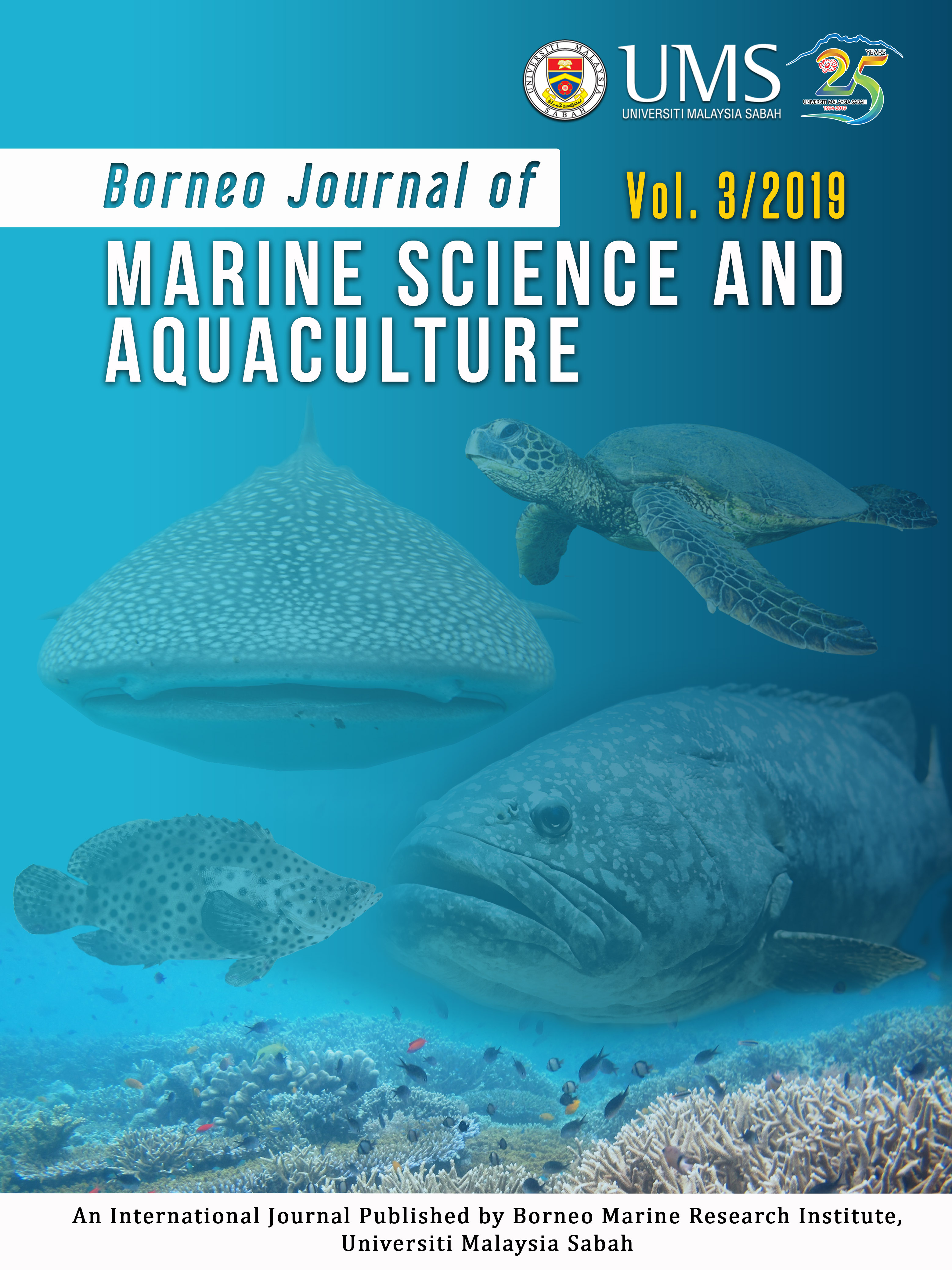RNA/DNA ratio in milkfish (Chanos Chanos) larvae reared at different stocking densities
DOI:
https://doi.org/10.51200/bjomsa.v3i1.1697Keywords:
RNA/DNA ratioAbstract
Stocking density can induce stress in fish in an aquaculture system if not handled properly, and the chronic stress may lead to mortality. Several studies have reported that the capability to deal with a range of stocking densities differs among fish species and maturity stage. Hence, fish larvae may have different resilience to stress from the adult fish. Milkfish larvae were reared in hatchery for 50 days using a recirculating culture system at four different stocking densities (8,12,16 and 20 larvae/liter). The growth performance was not significantly different (P>0.05) except at stocking density of 20 larvae/liter. The highest survival rate (88.04%) was recorded in the system with 8 larvae/liter while the lowest (55.44%) in the culture tank where stocking rate was 20 larvae/liter. The stocking density also influenced the RNA / DNA ratio of the milkfish larvae. The RNA/DNA ratio showed a pattern that was identical with that of sigmoid growth where stocking rate of 8, 12, and 16 larvae/liter gained weight until 30 days of rearing. Highest RNA/DNA ratio was recorded at 16 larvae/liter (2.85±0.004), while the lowest was at 20 larvae/liter (2.25±0.217). Food availability might play a limiting factor that leads to the lower RNA/DNA ratio of larvae reared at a high density due to competition.






